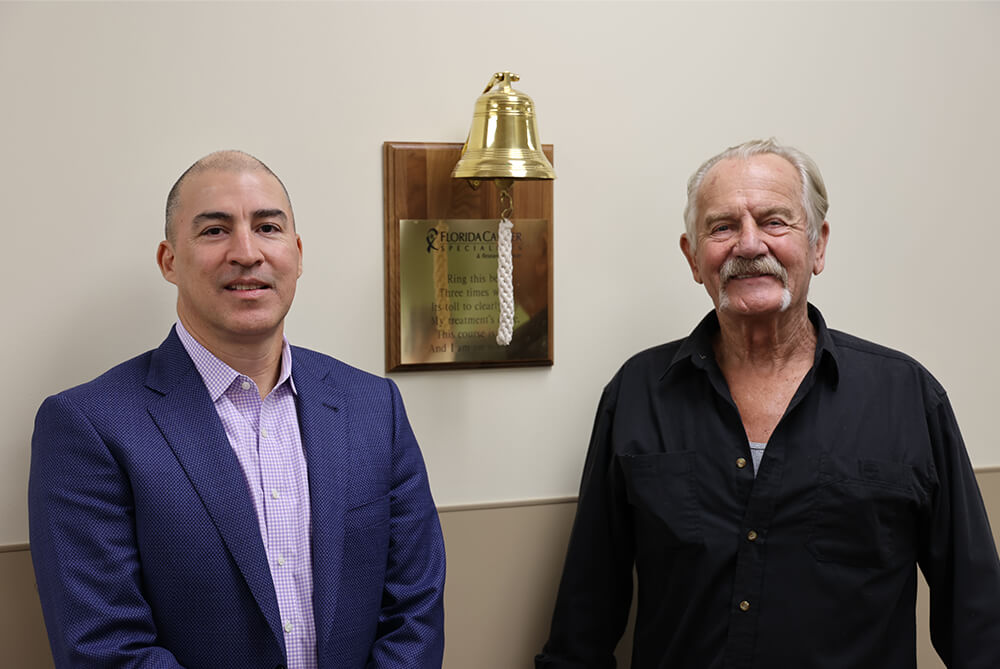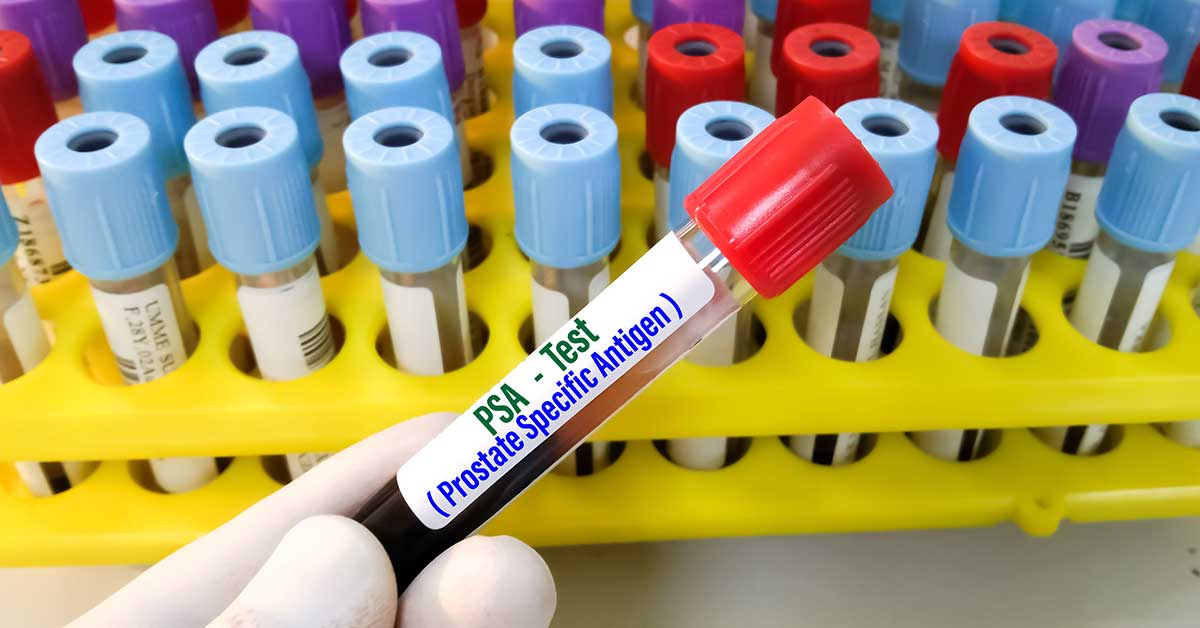Prostate Cancer
Contact Us
What is prostate cancer?
Prostate cancer is the most common cancer in American men, second only to skin cancer. Prostate Cancer forms in tissues of the prostate, a gland in the male reproductive system found below the bladder and in front of the rectum. One in nine men will be diagnosed with prostate cancer in their lifetime.
Back to Top
What causes prostate cancer?
The prostate, a gland found only in males, is located between the bladder and the rectum. Its primary function is to produce the seminal fluid that nourishes and transports sperm. Cancer develops when normal cells in the prostate gland become abnormal and begin to grow out of control. Typically, prostate cancer is slow-growing. Although in younger men, it is often more aggressive and can spread faster, making it more difficult to treat.
Back to Top
What are risk factors for developing prostate cancer?
The majority of cases (6 in 10) are diagnosed at age 65 or older; the average age at diagnosis is 66. Although rare, it can occur in men below age 50. Research indicates that African American men are 60 percent more likely to develop the disease than white, Latino or Asian men.
Back to Top
What are the warning signs and symptoms of prostate cancer?
While some men have no symptoms, there are warning signs:
- Frequent urination, often with the sudden need to urinate in the middle of the night
- Pain or burning during urination
- Blood in the urine
- Weak urine flow
How is prostate cancer diagnosed?
A blood test that measures the level of prostate specific antigen (PSA), a protein made by the prostate, is often the first step in screening for prostate cancer. The higher the PSA level in the blood, the more likely that a prostate problem is present. A digital rectal exam can also detect abnormalities in the prostate. If the result of either test is abnormal, your doctor may recommend a biopsy to investigate further.
Back to Top
How do you treat prostate cancer?
Prostate cancer is often slow growing. It can take years to become detectable, and even longer to spread, or metastasize, outside of the prostate. Many doctors recommend watchful waiting. They may choose to closely monitor the prostate with regular PSA testing and biopsies rather than starting treatment. However, some prostate cancer cases are more aggressive and need more urgent treatment. Surgery, radiation therapy or radiotherapy and hormone therapy are among the most common treatments.
- Non-invasive radiation therapies seek to kill the cancer. Radiation can be delivered externally by directing it at the cancerous cells.
- Brachytherapy surgically places radioactive seeds or pellets into or near the cancer cells to destroy them.
- A prostatectomy surgically removes the prostate.
Today, many prostate cancers can be treated in very short schedules that result in optimal outcomes, decreased cost and increased patient convenience. Florida Cancer Specialists & Research Institute offers the most advanced and personalized treatment options for prostate cancer, using state-of-the-art technologies and surgical techniques. Learn more about different types of radiotherapy available for prostate cancer treatment.
What are the survival rates for prostate cancer?
When found early, while cancer is confined to the prostate or the region surrounding it, treatment success and survival rates are very high. In the U.S., more than 90 percent of men diagnosed with prostate cancer live for five years or longer after treatment.
Back to Top
Are there screening tests that can help detect prostate cancer early?
Knowing the risk factors, symptoms and recommended screening guidelines is vital to early detection. The majority of prostate cancer cases are discovered in the early stages, making the disease more likely to respond to treatment. While no one can control age and hereditary factors, lifestyle changes can help decrease cancer risk. A plant-based diet, healthy weight and regular exercise have all been shown to lower the risk of prostate cancer.
Screening is recommended beginning at:
- Age 50 for men who have an average risk for prostate cancer
- Age 45 for men with a high risk of prostate cancer, including African American men, and any male with an immediate family member diagnosed with the disease under the age of 65
Talk with your doctor to make the best personal decision about whether and when to undergo PSA screening. Early detection can make all the difference for treating the disease before it spreads, often resulting in a better outcome.
XOFIGO®
Xofigo® (pronounced zoo-fee-go) is a targeted drug therapy, known as a radiopharmaceutical, used to treat symptomatic late-stage (metastatic) castration-resistant prostate cancer that has spread to the bones but not to other organs. Xofigo® contains a radioactive material (known as radium Ra 223) that mimics calcium. When injected intravenously (into a vein), it is absorbed in areas where cancer is present in the bone and kills fast-growing cancer cells, while protecting healthy tissue.
Learn more: what to expect with XOFIGO® treatment
Pluvicto™
Pluvicto™ is a targeted drug therapy, known as a radiopharmaceutical, which combines a chemical compound (called a ligand) with a radioactive particle (called a therapeutic radioisotope). When infused into the bloodstream intravenously (into a vein), Pluvicto™ locates the cancer in the body and delivers a microscopic amount of radiation directly to the tumor cells. The goal is to prevent cancer cells from growing or spreading while protecting surrounding healthy tissue. The full treatment is given as six separate infusions, six weeks apart. Pluvicto™ has been shown to significantly improve clinical outcomes and survival rates for patients who have had limited success with other therapies.
Learn more: what to expect ith Pluvicto™ treatment
Back to Top




























